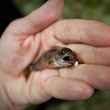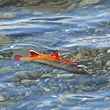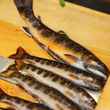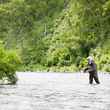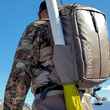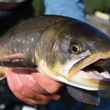RIO recently announced a new addition to its selection of fly lines designed specifically for nymph fishing, one which it is calling the most "mend-friendly line ever." The new line, named the Xtreme Indicator, is also the latest in RIO's growing InTouch series lineup, which includes lines built on RIO's ultra low-stretch ConnectCore technology.
According to RIO, "Anglers looking for a line to cast nymph rigs with indicators need look no further than the new InTouch Xtreme Indicator line. This line has a short head and a powerful front taper that loads up with a single cast and is the perfect line for carrying heavy loads and for fishing out of a boat."





